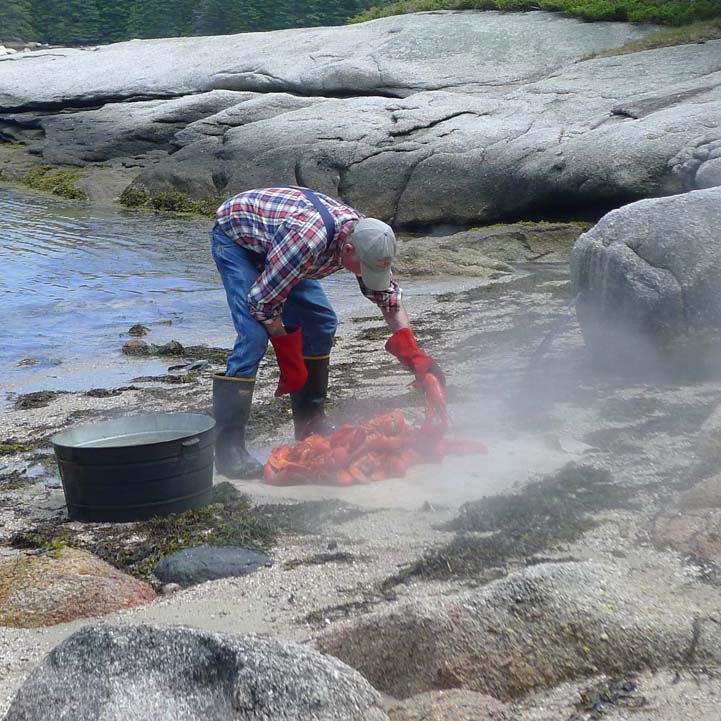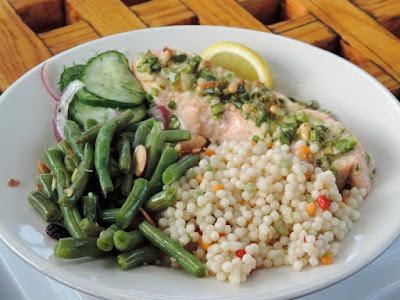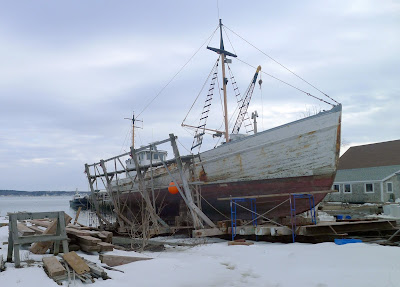Choosing a subject can be difficult when you live in the most beautiful place in the world.
 |
| American Eagle in Drydock, 12X16, oil on canvasboard, by Carol L. Douglas. Available. |
This winter I’ve been painting with Ken DeWaard, Eric Jacobsen, and Björn Runquist. None of us were born in Maine; we all choose to live here: for the fabulous light, unspoiled little villages, boats, and the rockbound coast. We all love to paint outdoors. So how does a typical morning conversation go?
“Got any ideas?”
“I dunno… don’t have a plan. How windy is it, anyway?”
“Miserable. My dog blew over.”
“Well, how about the creek?”
“Snow’s too deep. Next week. Is that where you’re headed?”
“I was thinking about it. Unless you can think of someplace better.”
 |
| Coast Guard Inspection, 6X8, oil on canvasboard, by Carol L. Douglas, available. |
This can go on for a silly amount of time. The problem is, we’re spoiled for choice. If we lived somewhere else, we’d head out to that place’s one beauty spot and be happy.
Nevertheless, we did manage to agree on a spot in Spruce Head. It was crisp and brilliant, and there are enough subjects in that one small curve of coast to last us for a whole painting season. Of course, that doesn’t mean we won’t have the same loopy conversation next week.
 |
| Changing Tides, 16X12, oil on canvas, by Lori Capron Galan. |
On Wednesday I wrote about an exercise in my class, where I asked my students to start with abstraction. Lori Capron Galan did it wrong, but it turned out weird and wonderful: she turned her canvas and reference 90° and painted the whole thing sideways.
That took her to the same place I was trying to get my students—to divorce themselves from slavish fidelity to reality, and to start thinking about shapes, colors and movement instead of simple pictorial representation.
The resulting painting, above, is so inspiring that I intend to try it myself soon.
 |
| Breaking Storm, by Carol L. Douglas, 24X36, available from Folly Cove Fine Art. |
This Tuesday, Captain John Foss of schooner American Eagle will appear on Captains’ Quarters, a Zoom presentation of the Sail Power and Steam Museum. The captain is a witty and smart fellow, and sailing with him is always a lark. (That’s the boat on which I teach my twice-a-year watercolor workshops.)
I wanted to email people who might want to tune in—those who’ve sailed with him, ought to sail with him, love wooden boats, etc. Then I realized it was most of the people I know.
That’s Tuesday, March 23, 2021, from 6:30 to 7:30. More information is here. To go directly to the registration, click here.
Launched in June of 1930 in Gloucester, MA, American Eagle was originally named Andrew and Rosalie and was the last of the Gloucester fishing schooners. Renamed American Eagle by a new owner in 1941, she fished until 1983, when she was purchased by her current owner and captain, John Foss. She arrived in Rockland in 1984 where Foss led her multi-year restoration at the North End Shipyard. She was relaunched in 1986 and began her new career, carrying passengers along the coast of Maine.

































